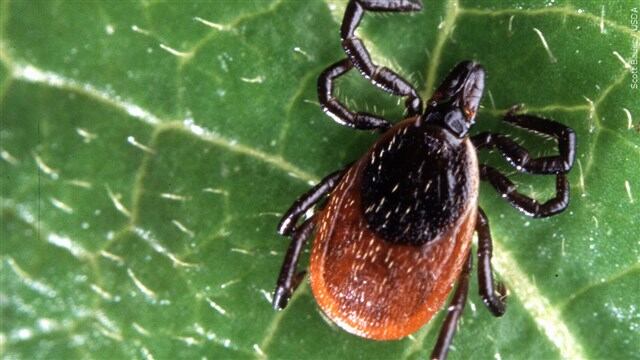
Tick Season Intensifies: Experts Warn of Rising Numbers and Offer Prevention Tips
Tick season is in full swing, and health experts are raising concerns about a potential surge in the population of these troublesome parasites. The combination of changing weather patterns and increased outdoor activity is creating a perfect storm for tick encounters.
Climate Change and Tick Proliferation
Experts believe that shifts in weather patterns, driven by climate change, are contributing to the rising number of ticks. Warmer temperatures extending for longer periods throughout the year allow ticks to remain active for more extended durations.
"They're also less active when there's a good deal of snow cover on the ground, and we’ve noticed that we still have heavy snow events, but with climate change, we get more frequent thaws throughout the winter," explains Andrea Wallace Noble of Severson Dells Nature Center. "So that means there's more days where ticks are out and about and looking for food." These frequent thaws disrupt the typical dormancy period for ticks, leading to increased activity and a higher potential for encounters with humans and animals.
Rising Emergency Room Visits
Data indicates a concerning trend. The Centers for Disease Control and Prevention (CDC) reports that the rate of Americans seeking emergency care for tick bites has reached its highest level since 2017. This increase underscores the growing public health concern associated with tickborne diseases.
Local Tick Bite Statistics
While national data paints a concerning picture, local statistics offer a more nuanced perspective. According to Dr. Sandra Martell, Winnebago County Public Health Administrator, ten local tick bites have been reported since May. While this number is relatively consistent with the 14 cases reported during the same timeframe last year, accurate tracking remains a challenge. "We can’t always get it reported where the individual lives, so we don’t know where the exposure occurred," Dr. Martell explains. This limitation highlights the need for improved surveillance and reporting mechanisms to gain a clearer understanding of tick bite incidents.
Recognizing Symptoms and Seeking Medical Attention
Prompt medical attention is crucial if you suspect you've been bitten by a tick and are experiencing symptoms. Dr. Martell advises individuals to closely monitor any tick bite and seek immediate medical care if symptoms develop.
Early signs of tickborne illnesses, which typically appear within 3 to 30 days of a bite, can include:
- Fever/Chills: A common symptom across various tickborne diseases.
- Aches and Pains: Headaches, fatigue, muscle aches, and joint pain.
- Rash: Lyme disease, Southern tick-associated rash illness (STARI), Rocky Mountain spotted fever (RMSF), ehrlichiosis, and tularemia can cause distinctive rashes.
"If you’re developing those early signs, which typically happen about three to 30 days, and making sure that you tell your clinician where you have gone," said Dr. Martell, emphasizing the importance of informing your healthcare provider about potential tick exposure.
Safe Tick Removal and Wound Care
Proper tick removal is essential to minimize the risk of disease transmission. Dr. Martell recommends the following steps:
- Remove the tick carefully, following recommended guidelines.
- Wash the affected area thoroughly with soap and water.
- Apply first aid to the bite site.
- Monitor yourself for any developing symptoms.
- Contact your healthcare provider if you experience any concerning signs.
Preventive Measures: Protecting Yourself from Tick Bites
The CDC recommends several effective strategies for preventing tick bites:
- Treat Clothing and Gear: Apply permethrin to outdoor clothing and gear. Permethrin remains effective even after multiple washes.
- Use EPA-Registered Insect Repellents: Apply insect repellents containing DEET, Picaridin, or other EPA-approved ingredients to exposed skin.
- Regular Tick Checks: When spending time outdoors, have a companion check you for ticks every two to three hours.
- Prompt Tick Removal: Removing ticks within a 24-hour period significantly reduces the risk of disease transmission. Ticks typically take a while to attach to your skin, it can take four or more hours for them to transmit a disease.
Enjoying the Outdoors Responsibly
While the threat of ticks is real, experts emphasize that it shouldn't deter people from enjoying the outdoors. Andrea Wallace Noble suggests that simple precautions can significantly reduce the risk of tick bites.
- When venturing into wooded or grassy areas, consider wearing long pants and long-sleeved shirts.
- Even when wearing shorts and a t-shirt, frequent tick checks are crucial.
- Upon returning indoors, perform a thorough tick check of your clothes, paying close attention to your legs and shoes.
"Every time we come inside from being outside, we just do a quick tick check of our clothes, especially our legs and our shoes to make sure that that we don’t have any unexpected hitchhikers," said Wallace Noble. By taking these simple steps, you can minimize your risk of tick bites and continue to enjoy the benefits of spending time outdoors.
Post a Comment for "Tick ER Visits Surge to Record High"